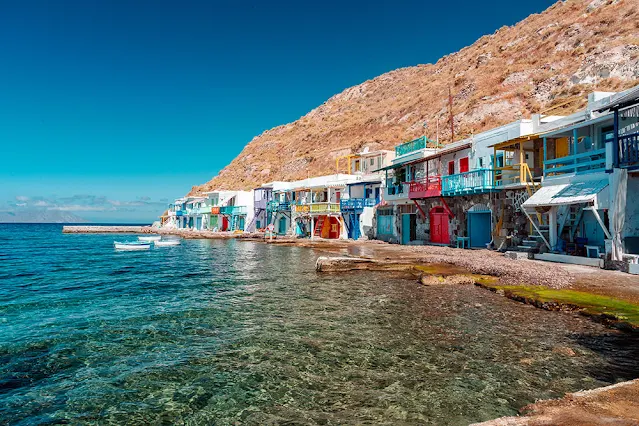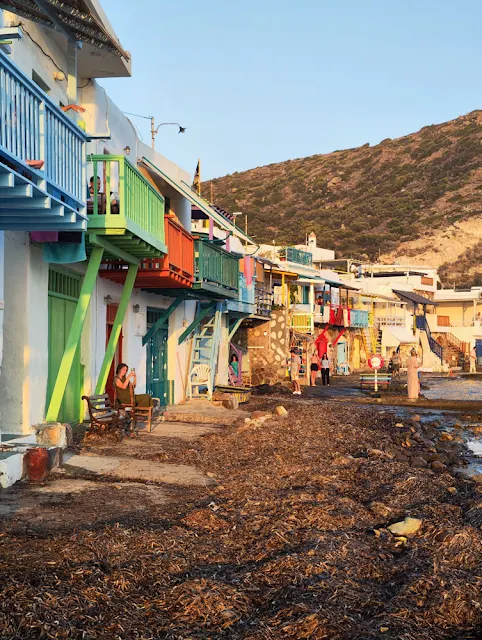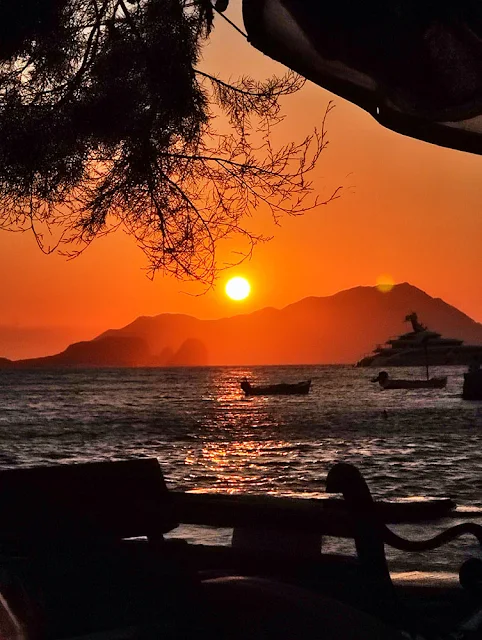Klima, a charming fishing village on the Greek island of Milos, is a picturesque gem known for its iconic boat houses, serene atmosphere, and the simple, unhurried way of life.
If you're seeking an authentic and tranquil experience in the Cyclades, Klima is the place to be. Here's your guide to exploring this delightful village:
1. Getting to Klima:
Klima is located on the northern coast of Milos, not far from the island's main town, Adamas. You can reach Klima by car or by taking a leisurely coastal walk along the scenic road from Adamas. Alternatively, you can rent a bike or scooter to enjoy the journey at your own pace.
2. Iconic Boat Houses:
Klima is renowned for its "syrmata," colorful and uniquely designed boat houses that are carved into the rock along the shore. These traditional buildings were originally used by local fishermen to store their boats and fishing equipment. Today, some of these boat houses have been transformed into cozy and charming accommodations, offering a unique experience of staying right on the waterfront.
3. Enjoy the Beach:
While Klima itself doesn't have a traditional sandy beach, it offers a quiet and picturesque setting by the sea. You can relax on the stone steps leading to the water, soak in the sun, and take in the soothing sounds of the waves. Don't forget to bring your swimwear if you'd like to take a dip in the clear waters.
4. Sunset Views:
Klima is particularly renowned for its stunning sunset views. As the sun descends over the Aegean Sea, the colorful boat houses and the calm waters create a mesmerizing backdrop. Many visitors gather to witness this daily spectacle, and it's an ideal time to capture some breathtaking photographs.
5. Explore Nearby Sites:
While in Klima, consider exploring some nearby attractions:
- Ancient Theater: Just a short drive away from Klima, you'll find the ancient theater of Milos, which dates back to the Hellenistic period. The site offers a glimpse into the island's history and provides panoramic views of the surrounding landscape.
- Plaka: The charming village of Plaka is not far from Klima and is worth a visit. Wander through its narrow streets, explore the local shops, and savor traditional Greek cuisine in the village's tavernas.
- Klima's Neighbors: Klima is part of a series of coastal villages, each with its unique charm. Visit Firopotamos Beach, Mandrakia, and Fourkovouni, all nearby, to explore the island's maritime heritage and take in the stunning coastal views.
6. Local Delicacies:
7. Essential Tips:
- Sun Protection: The Mediterranean sun can be strong, so be sure to bring sunscreen, a hat, and sunglasses to protect yourself.
- Footwear: Sturdy, comfortable shoes are advisable for exploring the rocky terrain, especially if you plan to walk from Adamas.
- Swimwear: Even though Klima doesn't have a traditional beach, it's a lovely spot for swimming, so pack your swimwear.
- Sunset Time: Check the local sunset time and arrive a little early to secure a good spot for witnessing the breathtaking sunset.



Comments
Post a Comment